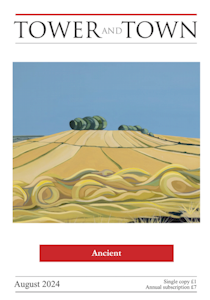

Tower and Town, August 2024 (view the full edition) (view the full edition)Baking with Ancient GrainsWhen I started baking bread, I decided I wanted to make the most delicious loaf I could. My first few attempts at baking sourdough at home were mixed. One loaf would be flat as a pancake, the next hollow. I would then make some progress in that the final product would resemble a loaf of bread. However, I could then spend two days making a loaf and realise once I was eating it, that I had forgotten to put any salt in it. Gradually, over time I became more confident but played it safe and used only hard white Canadian wheat from the supermarket, which ensured consistency. After playing around at home for a while, I decided to leave my office job and get a job in a bakery. I became obsessed. I would bake all day at work then come home and bake some more. I started reading about all the finer points of bread and baking, including the many varieties of wheat. I became most interested in what are referred to as ancient grains and the flours they produce. Ancient grains are varieties of grain that have remained largely unchanged since Neolithic domestication 10,000 years ago. These prehistoric grains include spelt, emmer and einkorn. Spelt was widely used in the Roman Empire and being the son of a Classics and Latin teacher, I felt it was my duty to start there. I bought my first bag of spelt flour from a health food shop and couldn't wait to get home and make a loaf. Unfortunately, I felt like I was back at the beginning of my baking journey; the loaf was flat and had a weird crust. I hacked off a slice and tried it. Despite appearances, it was delicious; it tasted nutty and wholesome. The modern Canadian hard wheat I had been using has been bred to have a strong gluten structure, and therefore is easier to work with, though at the cost of flavour. As spelt has a more delicate gluten structure, it requires a softer touch. Once I had sampled the delicious, overtly 'bready' flavour of spelt, I couldn't go back. I persevered with spelt sourdough; I tested and adapted my recipe and methods. I worked the dough less, treated it with a gentle respect and finally landed on a recipe that I love and works every time. This has given me great satisfaction, along with the idea that this grain used for the purposes of making bread has been enjoyed by countless people for thousands of years. Joshua Bumphrey |